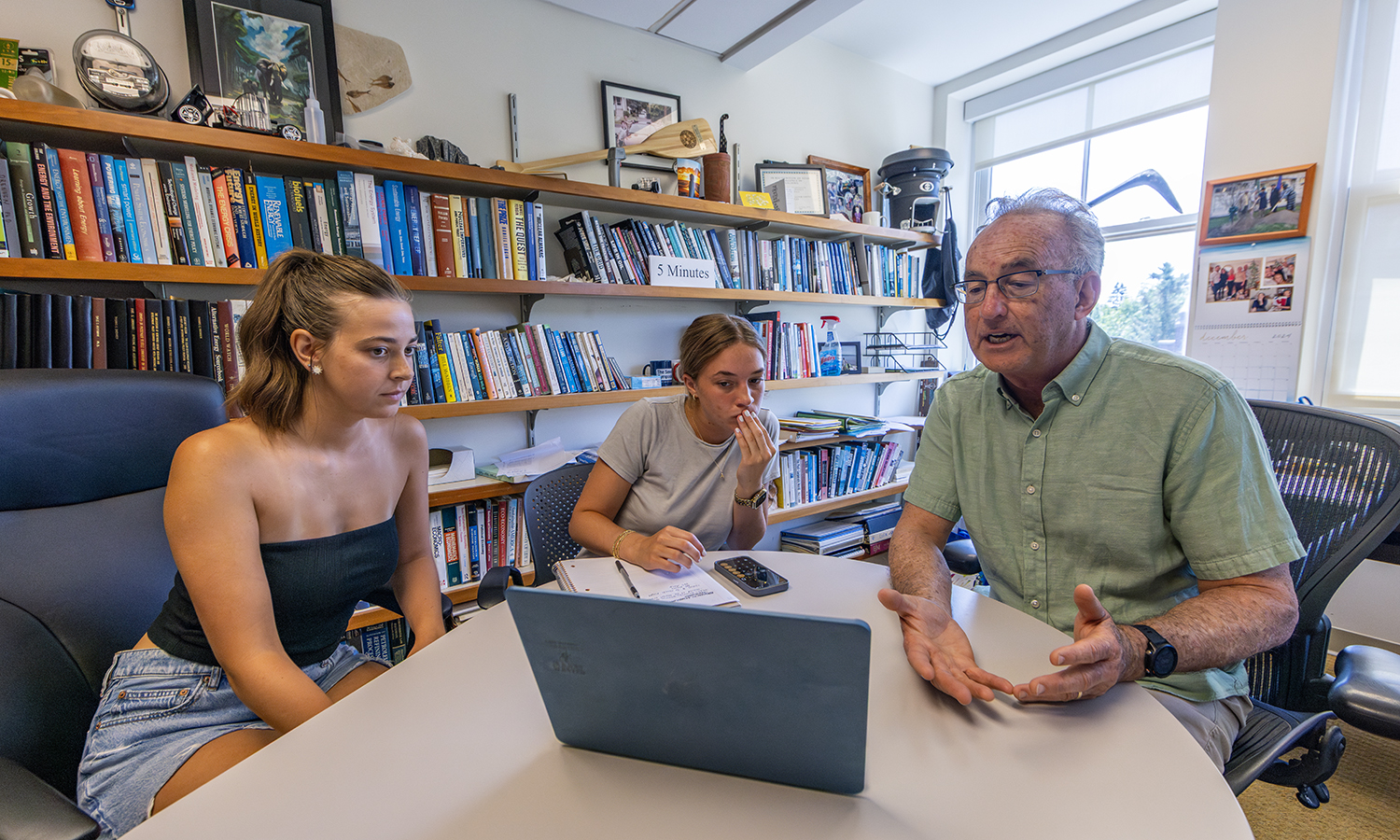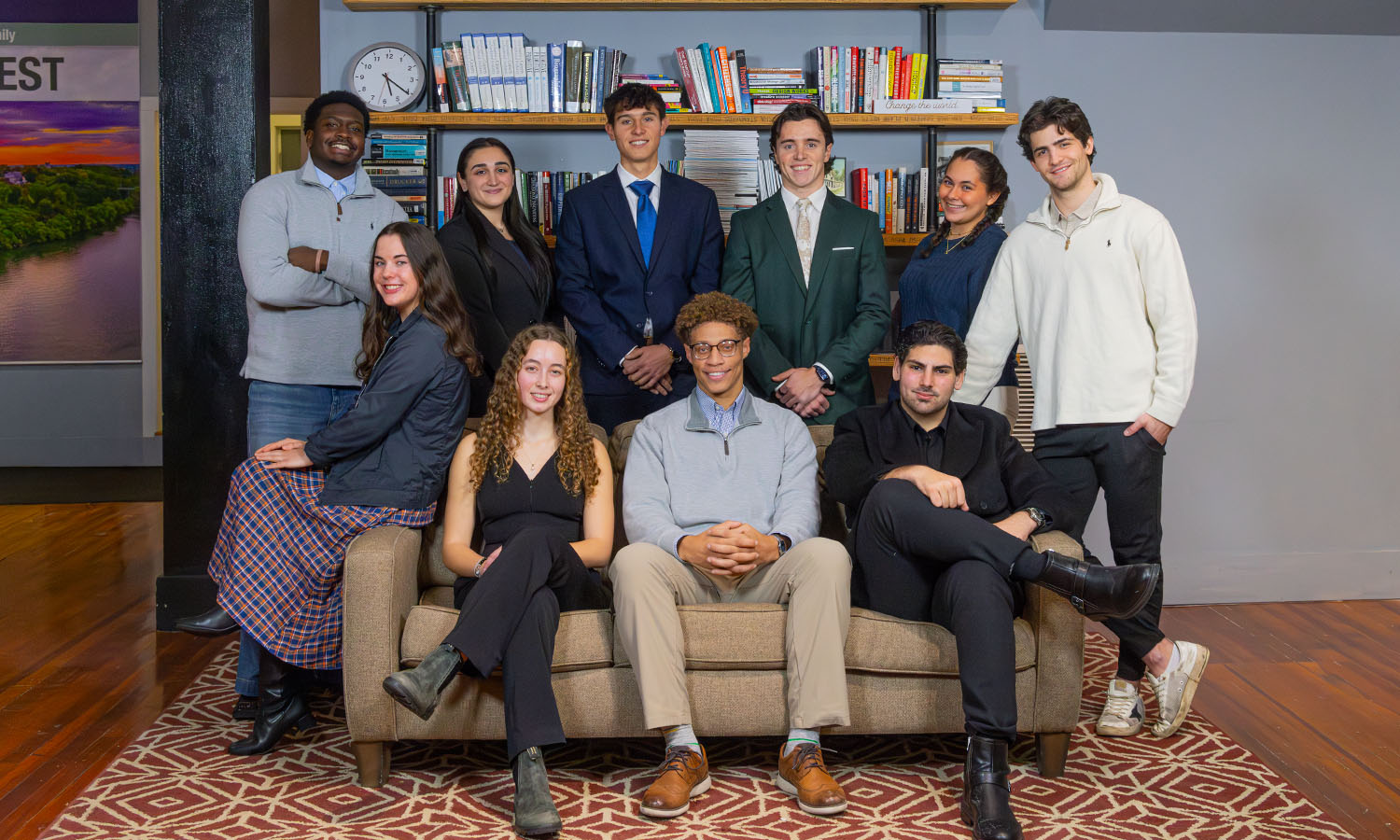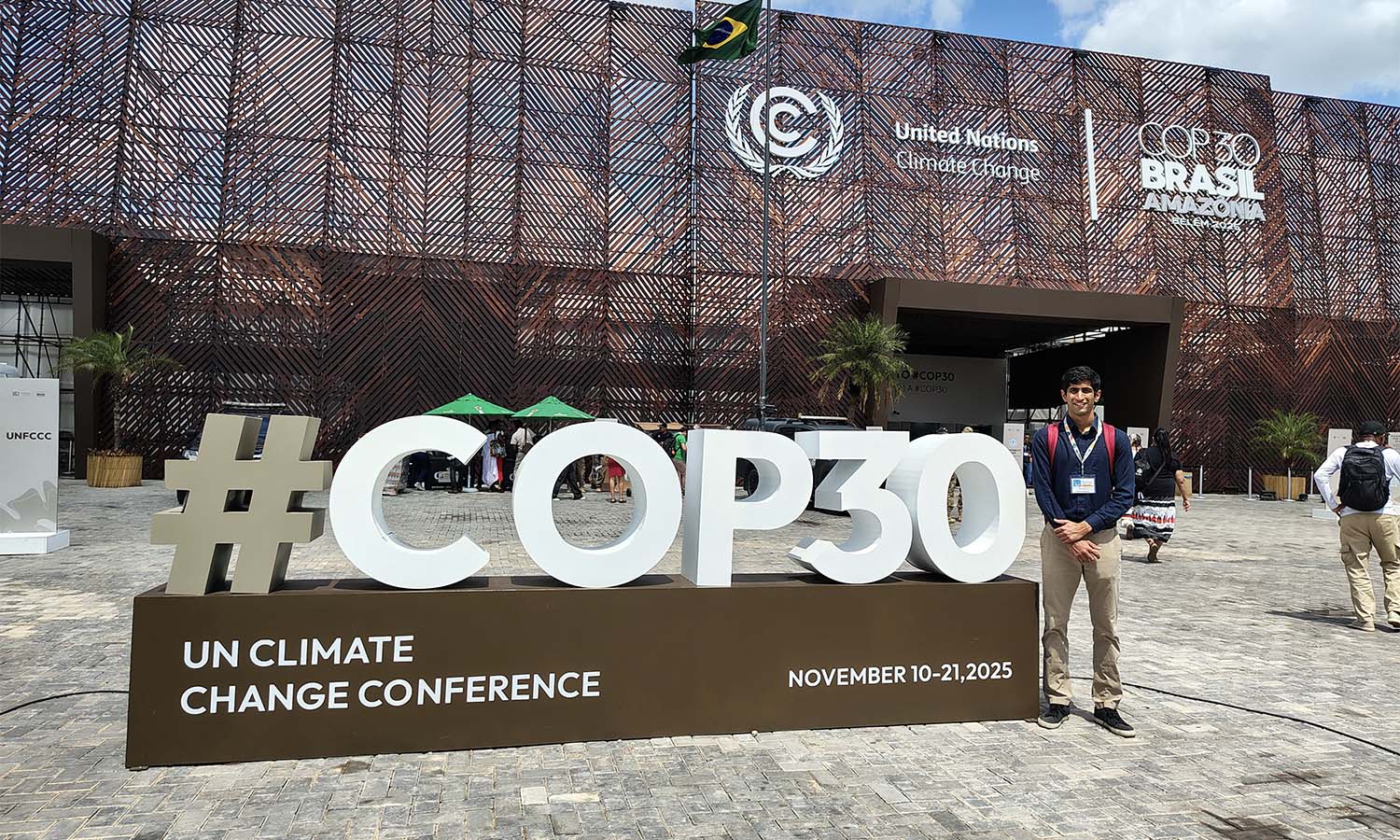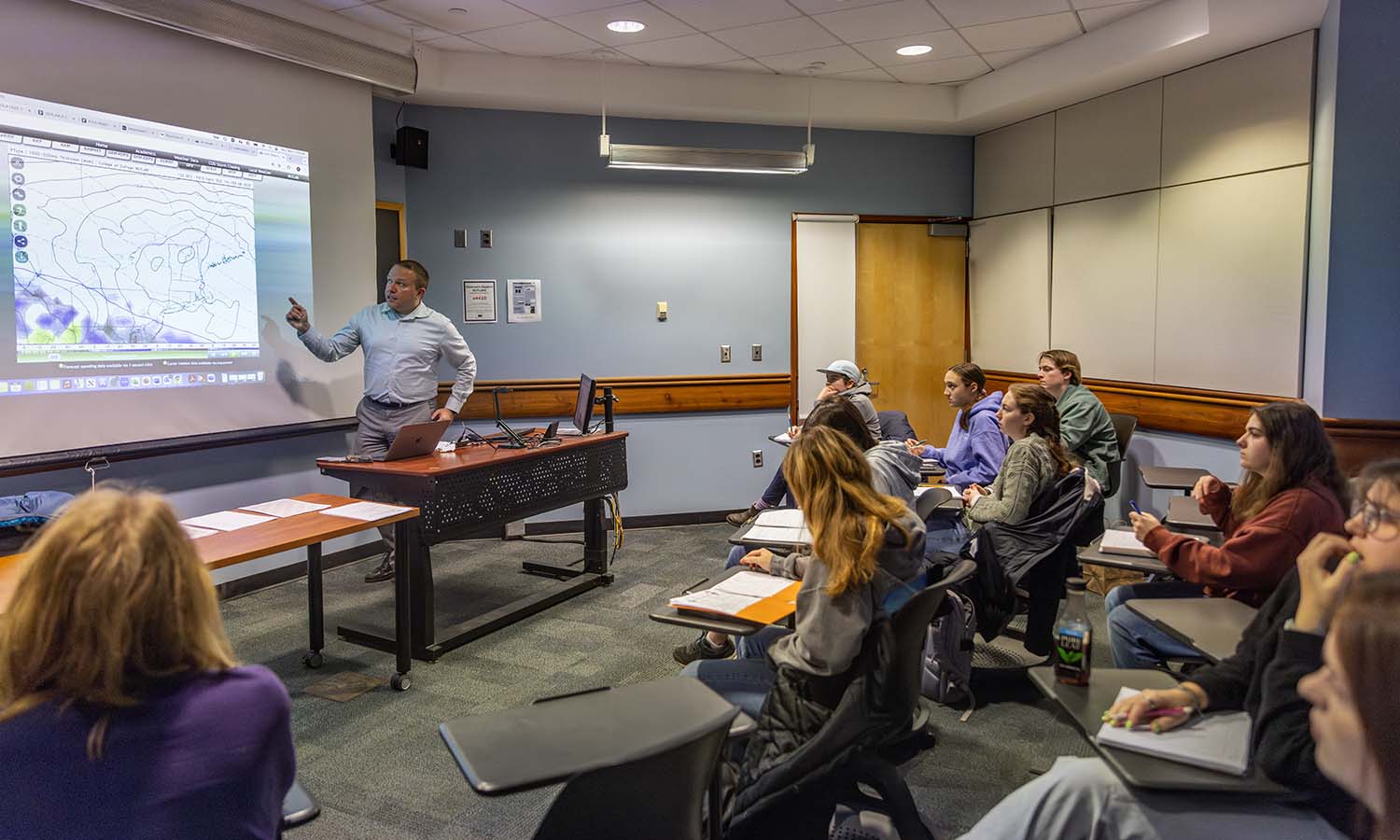
HWS News
28 July 2025 • Research • Sustainability Exploring Sustainability from Campuswide and Citywide Perspectives
Students evaluate sustainability efforts on the HWS campus and in office buildings across New York City.
This summer Hobart and William Smith students are researching sustainability, each approaching the subject from distinct but complementary angles, under the leadership of Professor of Business Management and Entrepreneurship Thomas Drennen.
Emma Butry ’27, a double major in Environmental Studies and Writing and Rhetoric, is collecting and analyzing information to update HWS’ Sustainability, Tracking, Assessment and Rating System (STARS) report, an international rating awarded by the Association for the Advancement of Sustainability in Higher Education (AASHE). Aryanna Burbas ’27, an architectural and environmental studies double major, is studying New York City office buildings to gauge how many fail to meet New York City Department of Building standards and by how much.
Specifically, Burbas is examining Local Law 97, which aims to reduce buildings’ greenhouse emissions. The law mandates that NYC buildings over 25,000 square feet must avoid surpassing carbon emission limits or risk fines. Long-term, the law is supposed to reduce the city’s overall greenhouse gas emissions by setting increasingly stricter limits in 2030 and beyond.
Both students’ work is funded by the Russell C. Osur Sustainability Research Fund, established by Russell Osur ’02 in 2023 to support a three-year internship program for two annual internships in the Office of Sustainability.
At HWS, Butry’s work is based on sustainability efforts across four key areas: academics, engagement, operations, planning and administration. Since its initial STARS submission in 2017, HWS has consistently earned silver ratings.
Butry developed an innovative way to collect information that previously had been arduous to complete. She had the idea to ask artificial intelligence to determine the tree canopy percentage on campus using satellite imagery instead of going tree-to-tree on foot.
“We used AI to calculate a figure that would have taken the entire summer to determine, and we did that within an hour,” says Butry, noting past efforts involved students trying to identify and locate every tree, including mapping GPS coordinates. By feeding satellite images and specific prompts into AI—including instructions to include the Nature Preserve and Coopers’ Woods—the tool generated a full methodology, calculations and equations. Butry found there is a 54.6% tree canopy across campus, which is necessary for the STARS ranking.
Every five years, colleges and universities nationwide must submit their most recent performance findings to maintain or improve their ranking. In 2024, a year ahead of schedule, HWS became one of only 11 colleges nationwide to achieve net zero greenhouse gas emissions.
“Because of carbon neutrality, we’re doing a really good job,” says Drennen, who has led HWS sustainability initiatives for the past two decades. “I think we can get a gold rating, which would require improving the efficiency of buildings and sustainability education,” he says.
Meanwhile in NYC, Burbas is working with Drennen and is being mentored by Stuart Brodsky ’85, national program manager of commercial properties at Energy Star, an energy efficiency program run by the Environmental Protection Agency and U.S. Department of Energy.
Using the Building Energy Exchange database and carbon emissions calculator, Burbas is analyzing how these penalties might impact different building types, particularly office buildings. The database lists the emissions each year over the threshold for each of the five-year periods, with the first period spanning from 2024 to 2029.
The overarching goal is to reduce emissions from the city’s largest buildings by 40 percent in five years and to achieve net-zero emissions by 2050.
“Right now, we’re still working out a methodology,” says Burbas, adding one concern is whether fines will be significant enough to compel buildings to change.
Building owners have to self-report emissions; that information is then cross-checked with their square footage and utility data, Drennen explains. “It's basically how much electricity and natural gas and steam they're using,” he says. The goal is to get them to improve their efficiency or pay fines if they don’t. Ultimately, he adds, it should influence the way developers build new buildings.
Both projects reflect HWS’ ongoing investment in environmental leadership. “The reason that we have achieved carbon neutrality on this campus—the 11th school in the country to reach that—was because of a student project back in 2007,” Drennen says. “That one student, Clancy Brown ’09, made a pitch to President Mark D. Gearan to join this commitment.” In 2024, that one student’s work culminated in net zero greenhouse gas emissions.
Top: Emma Butry ’27 and Aryanna Burbas ’27 join Professor of Business Management and Entrepreneurship Thomas Drennen to analyze the efficacy of building standards in NYC that seek to sharply reduce greenhouse gas emissions.



